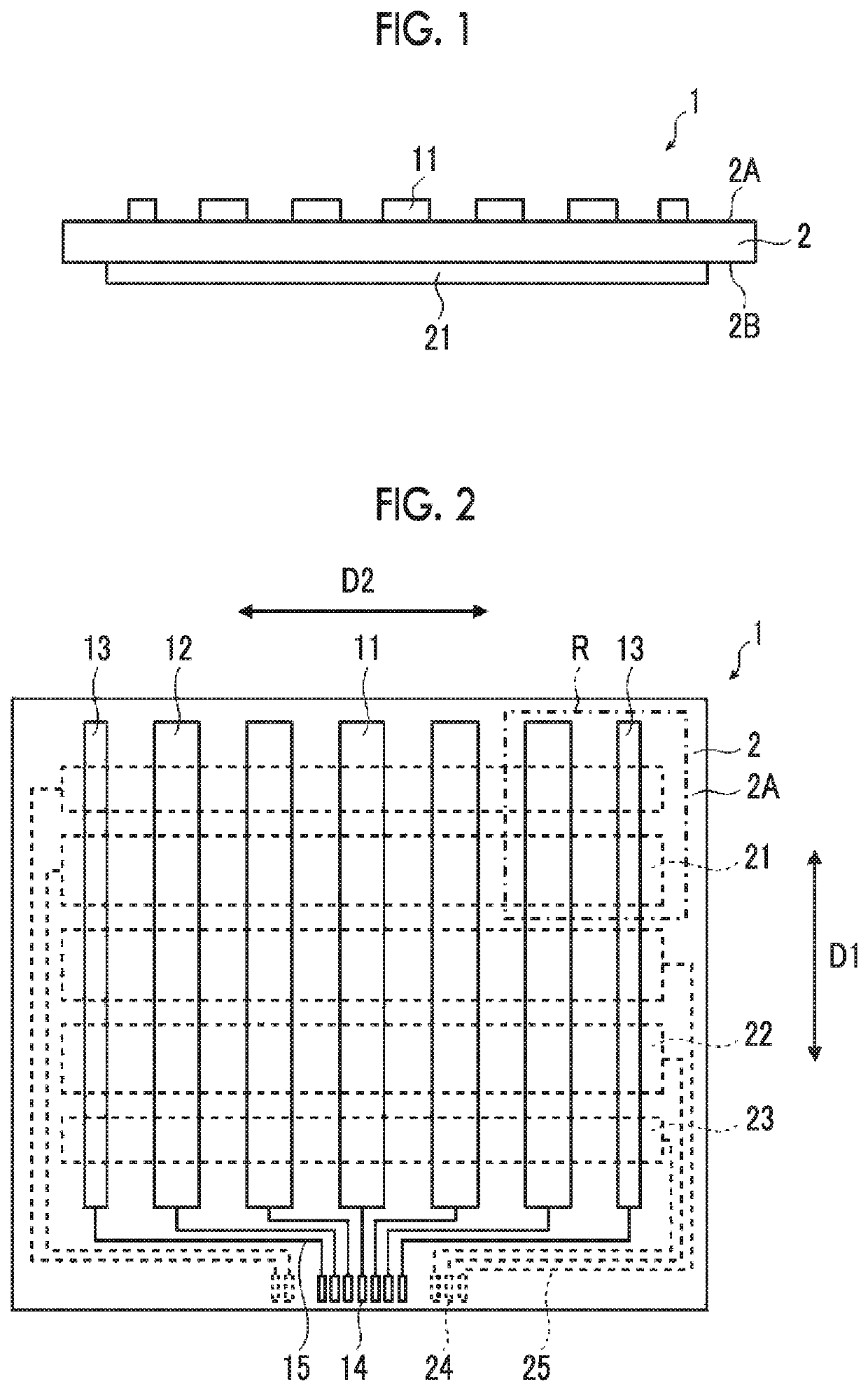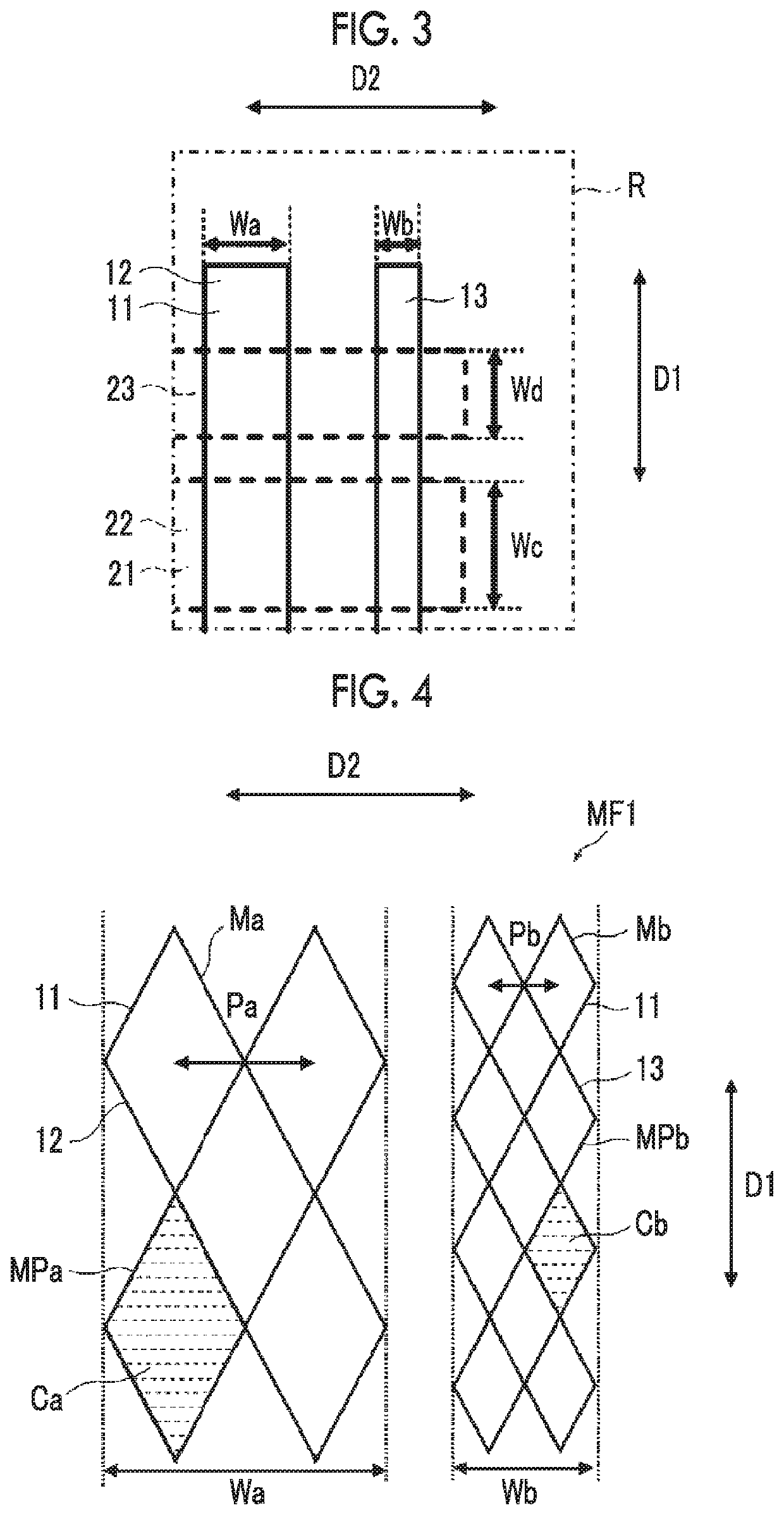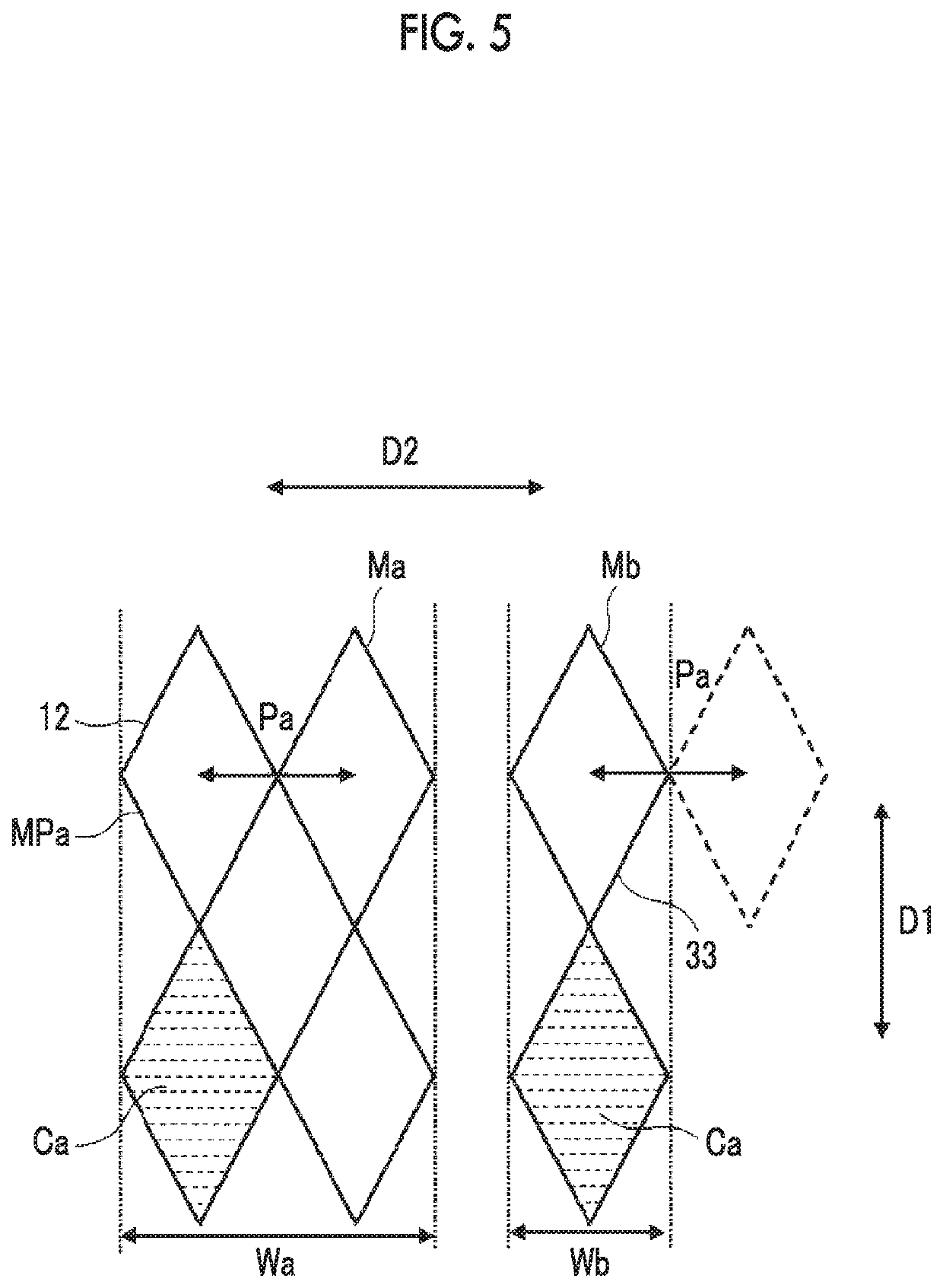Conductive member for touch panel and touch panel
a technology of conductive members and touch panels, which is applied in the direction of dielectric characteristics, conductive layers on insulating supports, instruments, etc., can solve the problems of insufficient assurance of intersections of fine metal wires compared to other second electrode regions, and it is not possible to obtain high detection sensitivity and excellent uniformity of detection sensitivity of touch panels, so as to improve detection sensitivity and improve detection sensitivity. the effect of uniformity
- Summary
- Abstract
- Description
- Claims
- Application Information
AI Technical Summary
Benefits of technology
Problems solved by technology
Method used
Image
Examples
embodiment 1
[0048]FIG. 1 is a cross section view showing a conductive member 1 according to Embodiment 1. As shown in FIG. 1, the conductive member 1 has a transparent insulating substrate 2 that is a transparent insulating member, and the transparent insulating substrate 2 has a front surface 2A and a back surface 2B. A plurality of first electrodes 11 are formed on the front surface 2A of the transparent insulating substrate 2, and a plurality of second electrodes 21 are formed on the back surface 2B of the transparent insulating substrate 2 as described later.
[0049]FIG. 2 is a plan view showing the conductive member 1 according to Embodiment 1. As shown in FIG. 2, the plurality of first electrodes 11 extend in a first direction D1 and are arranged in parallel at intervals therebetween in a second direction D2 intersecting the first direction D1 so as to be insulated from one another. In addition, the plurality of first electrodes 11 arranged in parallel in the second direction D2 include a p...
embodiment 2
[0103]FIG. 7 is a partially enlarged plan view of a first main electrode 42 and a first sub-electrode 13 in Embodiment 2. The first sub-electrode 13 of a first electrode 41 in Embodiment 2 is the same as the first sub-electrode 13 in Embodiment 1, and the first main electrode 42 of the first electrode 41 in Embodiment 2 is the same as the first main electrode 12 in Embodiment 1 except that a first dummy pattern DP1 is included. The first dummy pattern DP1 is constituted by a plurality of fine metal wires DM1, and the plurality of fine metal wires DM1 are arranged with a gap G1 with respect to a plurality of fine metal wires Ma constituting the first conductive mesh pattern MPa. That is, the first dummy pattern DP1 is arranged so as to be electrically insulated from the first conductive mesh pattern MPa. In addition, the first dummy pattern DP1 is arranged on a line connecting the midpoints of sides of the mesh cell Ca facing each other so that the mesh cell Ca constituting the first...
example 1
[0195]Example 1 is a touch panel having a conductive member of the same shape as that of the conductive member 1 of Embodiment 1 illustrated in FIGS. 1 to 4 and 6. The line width of each of the plurality of fine metal wires Ma and Mb constituting the plurality of first electrodes 11 and the plurality of second electrodes 21 is set to 4.0 μm, and the first conductive mesh pattern MPa and the second conductive mesh pattern MPb constituting the plurality of first electrodes 11, and the third conductive mesh pattern MPc and the fourth conductive mesh pattern MPd constituting the plurality of second electrodes 21 were a rhombus mesh with an acute angle of 60 degrees. In addition, in the first electrode 11, the mesh pitch Pa of the first conductive mesh pattern MPa constituting the first main electrode 12 was set to 800 μm, the electrode width Wa of the first main electrode 12 was set to 2.00 mm, the mesh pitch Pb of the second conductive mesh pattern MPb constituting the first sub-electr...
PUM
 Login to View More
Login to View More Abstract
Description
Claims
Application Information
 Login to View More
Login to View More - R&D
- Intellectual Property
- Life Sciences
- Materials
- Tech Scout
- Unparalleled Data Quality
- Higher Quality Content
- 60% Fewer Hallucinations
Browse by: Latest US Patents, China's latest patents, Technical Efficacy Thesaurus, Application Domain, Technology Topic, Popular Technical Reports.
© 2025 PatSnap. All rights reserved.Legal|Privacy policy|Modern Slavery Act Transparency Statement|Sitemap|About US| Contact US: help@patsnap.com



